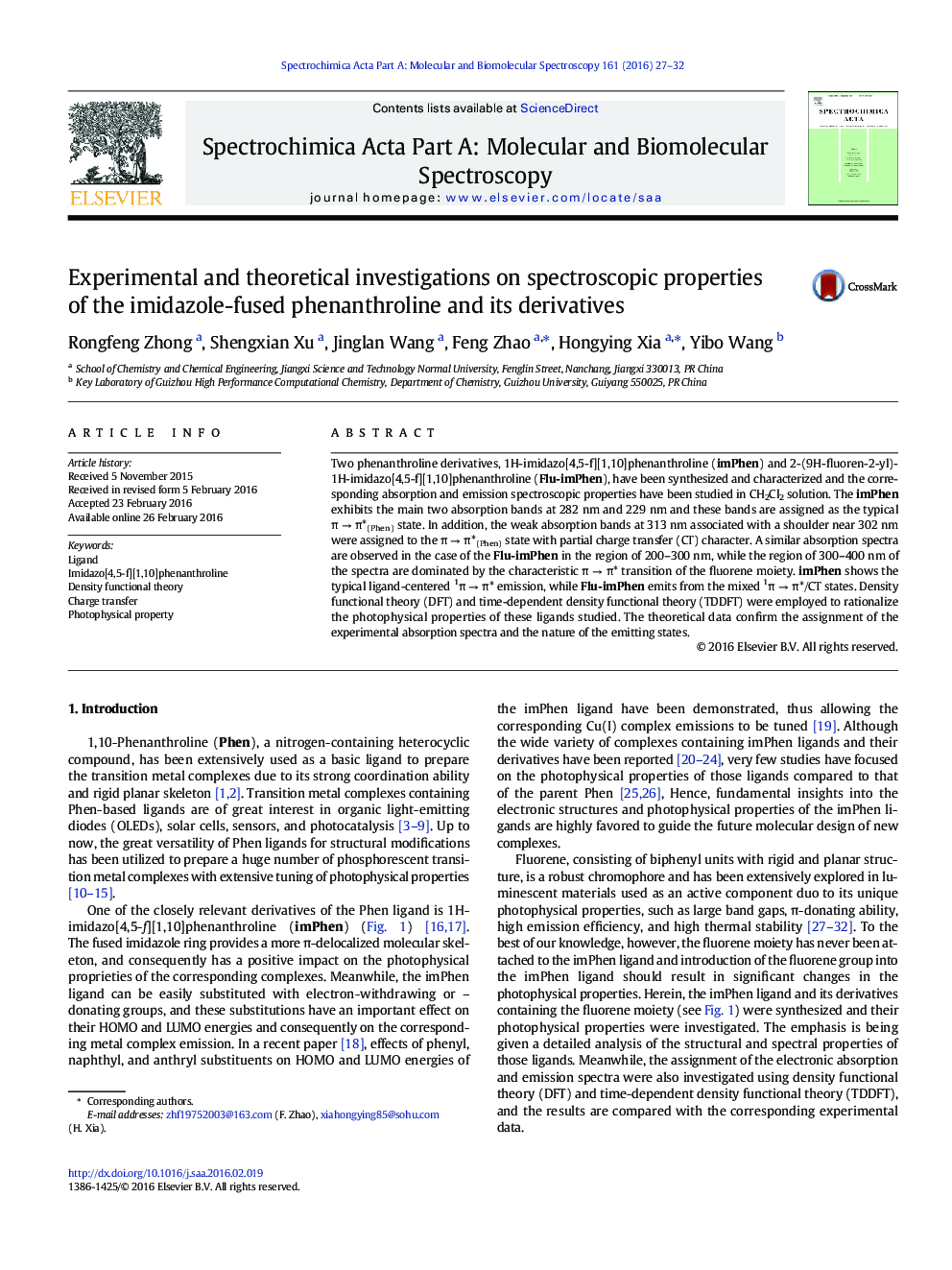| Article ID | Journal | Published Year | Pages | File Type |
|---|---|---|---|---|
| 1228842 | Spectrochimica Acta Part A: Molecular and Biomolecular Spectroscopy | 2016 | 6 Pages |
•Two imidazole-fused phenanthrolines were synthesized and characterized.•The spectroscopic properties were investigated by the experimental and theoretical methods.•Assignments of the absorption bands and the emitting state were rationalized.
Two phenanthroline derivatives, 1H-imidazo[4,5-f][1,10]phenanthroline (imPhen) and 2-(9H-fluoren-2-yl)-1H-imidazo[4,5-f][1,10]phenanthroline (Flu-imPhen), have been synthesized and characterized and the corresponding absorption and emission spectroscopic properties have been studied in CH2Cl2 solution. The imPhen exhibits the main two absorption bands at 282 nm and 229 nm and these bands are assigned as the typical π → π*(Phen) state. In addition, the weak absorption bands at 313 nm associated with a shoulder near 302 nm were assigned to the π → π*(Phen) state with partial charge transfer (CT) character. A similar absorption spectra are observed in the case of the Flu-imPhen in the region of 200–300 nm, while the region of 300–400 nm of the spectra are dominated by the characteristic π → π* transition of the fluorene moiety. imPhen shows the typical ligand-centered 1π → π* emission, while Flu-imPhen emits from the mixed 1π → π*/CT states. Density functional theory (DFT) and time-dependent density functional theory (TDDFT) were employed to rationalize the photophysical properties of these ligands studied. The theoretical data confirm the assignment of the experimental absorption spectra and the nature of the emitting states.
Graphical abstractFigure optionsDownload full-size imageDownload as PowerPoint slide
